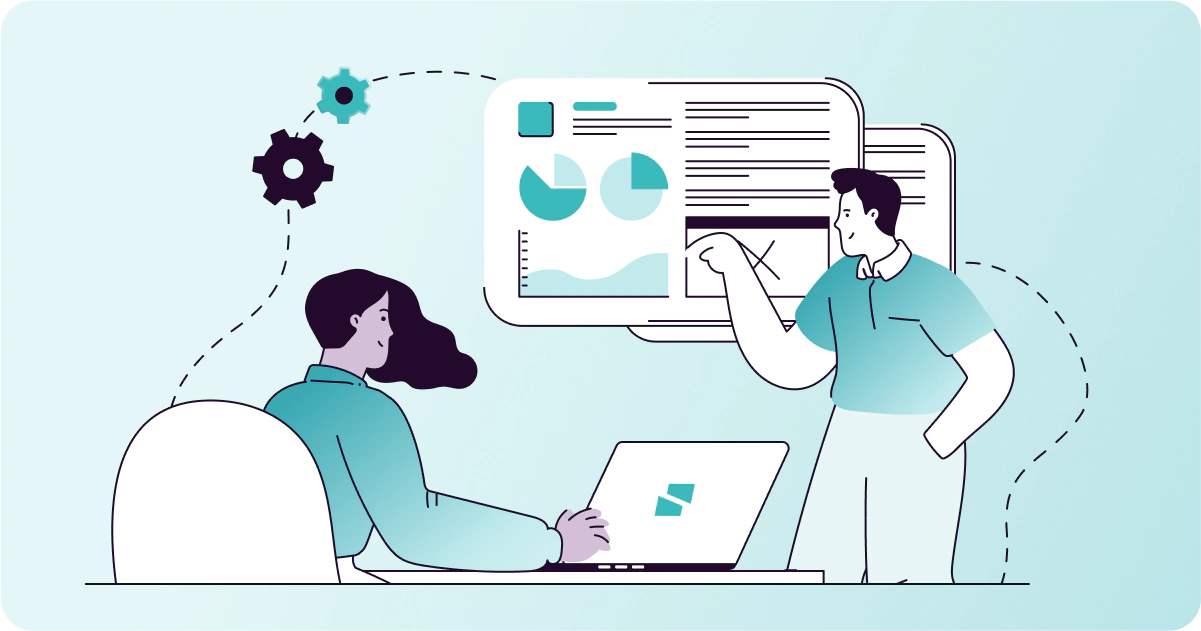As a Senior Solution Consultant at Seismic, one of the most important things I do is partner with our customers to measure enablement success. In reality, it’s difficult to define success metrics that apply to a wide array of organisations.
About a year ago, I met with a Seismic customer who changed my view on measuring success. For them, success boils down to a single, yet important question: Is my enablement technology making us more money than it’s costing us?
In this post, we’ll highlight the importance of enablement technology to your programme and how you can measure its impact to improve your initiatives.
Making the case for enablement technology
We live in a world where tech stacks are scrutinised and evaluated for efficacy. Sales enablement teams often act as centres of excellence, tasked with developing and deploying best practices and processes benefiting various departments.
Enablement continues to be a rapidly growing priority for major organisations. To put it into perspective, in 2017 only 58% of companies had a dedicated sales enablement resource, team, or programme. Now, more than 80% of organisations do. As demand grows —– and the pressure to quantify value increases —– enablement professionals must make the case for continued confidence and investment for a variety of executive decision-makers. That makes the measurement of success more important than ever.
Enablement is driving strategic change companywide.
Measuring the success of your enablement programme
Defining the success of any enablement programme starts with understanding the problems you want to solve. Uncovering these core issues helps identify a path to value. Here are some tips to get started:
- Learn what’s working and what isn’t. Replicate success where possible, refine promising efforts, and improve or discard what doesn’t deliver value.
- Align the biggest efforts with the biggest returns. Demonstrating the value of your investment in tangible ways allows you to measure it against the resources invested.
- Implement new processes to drive productivity and maturity. Establishing an end-to-end process for rolling out and measuring new efforts is essential for success.
Use findings to usher in new processes
Driving toward productivity and maturity means establishing a comprehensive process to launch, measure, and optimise new efforts. I’m used to rolling up my sleeves and helping clients move from the art of the possible into reality, so I want to share things you can do right now.
- Select success metrics: Defining good KPIs is challenging but essential. It starts with identifying the problems you want to solve and your desired outcomes. For example, if you aim to enhance seller efficiency, you can measure the average sales cycle. Compare the performance of sellers using enablement tools to those who do not. Then, use the gap in the average sales cycle to define your KPIs and develop an engagement programme.
- Ensure access to data: Understand what data is accessible and assess what’s lacking based on your objectives. Our analytics enable you to filter various dashboards and reports using both out-of-the-box metadata and custom content properties. If essential elements are absent, consider integrating with other platforms like your HRIS system or CRM to incorporate those data points into Seismic, enhancing the measurement capability.
- Connect the dots: Knowledge is critical for mastering analytics in Seismic. To gauge success accurately, connect your enablement programmes and key behaviours with our analytics. For instance, if one of your KPIs is focused on platform adoption, clarify what constitutes adoption: is it based on login frequency, content usage, or user activity? Precisely defining success criteria ensures clarity in measurement.
- Move from data to insights: While data is valuable, insights are invaluable. Performance metrics are great, but the real value lies in analysing and interpreting them to make impactful recommendations. This process can be challenging, as it requires translating data into actionable insights. Seismic alleviates this fear by offering automated insights as part of our comprehensive package. For instance, if you want to audit the internal performance of your content to understand what resonates with your sellers, our out-of-the-box dashboards provide instant recommendations based on industry standards.
As you continue to leverage Seismic, you’ll discover how to define key metrics that drive success. While capturing the necessary data might seem daunting, being open to exploration and learning equips you to answer the million-dollar question: Is Seismic making us more money than it’s costing us?
Seismic makes it simple to measure success
Reflecting on the conversation with our client, I’m pleased to report that our analysis and discovery determined their answer was a resounding yes. At Seismic, we believe every customer needs to ask the same question when starting to measure success. Enablement is mission-critical and impacts the entire organisation. Future platform innovations promise to make measuring the comprehensive impact of every enablement effort even easier.
In the meantime, if you need further guidance on your journey to answer this question, Seismic solution consultants and strategic advisors are here to help you analyse your data and make programme recommendations that will set you on the path to organisational transformation.
You can also download the Generation Enablement Report: Driving Strategic Change with the Power of AI here!
